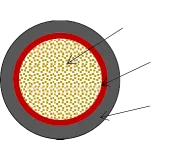Desemba . 01, 2024 03:26 Back to list
Understanding Flow Control Check Valves for Optimal System Performance
Understanding Flow Control Check Valves
Flow control check valves are critical components in various fluid systems, designed to manage the flow of liquids or gases while preventing backflow. These valves serve a dual purpose, allowing for the regulation of flow rates and ensuring that the medium only travels in one direction. This functionality is essential in numerous applications, from industrial processes to residential plumbing systems.
What Are Flow Control Check Valves?
A flow control check valve is a device that combines the features of a flow control valve and a check valve. As a flow control valve, it regulates the speed and volume of the fluid flowing through a system, which is crucial in processes that require precise control of fluid dynamics. As a check valve, it prevents reverse flow, safeguarding equipment from damage and maintaining operational efficiency.
Most commonly, these valves are made from materials such as stainless steel, PVC, brass, or other durable alloys that can withstand different types of fluids, including corrosive substances. When designing a system that employs flow control check valves, several factors must be taken into account, including the type of fluid, pressure conditions, and the specific flow rate requirements.
How Do They Work?
Flow control check valves typically operate using either a spring mechanism or a gravity-based design. In a spring-operated system, the valve features a movable disc or ball that is held in place by a spring when no fluid flows. As fluid pressure builds up, the force exceeds the spring’s resistance, allowing the valve to open and permit flow. Upon reducing the pressure or stopping the flow, the spring action ensures that the valve closes, preventing backflow.
In gravity-based designs, the valve utilizes the weight of a movable component to close against the flow, ensuring that the valve remains closed when there is no forward pressure. The operation of these valves must be carefully designed to match the specific system requirements, as improper sizing could lead to inefficiencies or mechanical failures.
Applications of Flow Control Check Valves
The versatility of flow control check valves allows them to be used in a wide range of applications
1. Water Supply Systems In municipal water distribution, these valves ensure that water flows in the correct direction, avoiding contamination from backflow.
flow control check valve

2. Industrial Processes Factories that rely on fluid transport systems use flow control check valves to manage the flow of liquids and gases in processes such as chemical manufacturing or food production.
3. Hydraulic Systems In hydraulic machinery, these valves prevent backflow and regulate the pressure and flow rate of hydraulic fluids, ensuring the machine operates efficiently.
4. Aquarium and Pool Systems These valves help maintain suitable conditions in tanks and pools by controlling the flow of water and preventing unwanted backflows.
Benefits of Flow Control Check Valves
Utilizing flow control check valves offers numerous advantages
- Efficiency They help maintain optimal flow rates, enhancing the overall efficiency of the system. - Protection By preventing backflow, these valves protect equipment and pipes from damage caused by reverse fluid movement.
- Simplicity Installation and maintenance of flow control check valves are relatively straightforward, making them an excellent choice for both new installations and retrofitting existing systems.
- Versatility These valves can be designed for various applications, accommodating different fluid types and system pressures.
Conclusion
Flow control check valves are indispensable tools in modern fluid control systems. Their ability to simultaneously regulate flow and prevent backflow is crucial for maintaining efficiency and protecting equipment across diverse applications. Understanding the operation, advantages, and appropriate uses of these valves is vital for engineers and technicians involved in system design and maintenance. As technology grows and the demands for efficient fluid management increase, the role of flow control check valves will continue to expand, ensuring the safety and effectiveness of fluid systems worldwide.
Share
-
Reliable Wafer Type Butterfly Valves for Every IndustryNewsJul.25,2025
-
Reliable Flow Control Begins with the Right Ball Check ValveNewsJul.25,2025
-
Precision Flow Control Starts with Quality ValvesNewsJul.25,2025
-
Industrial Flow Control ReliabilityNewsJul.25,2025
-
Engineered for Efficiency Gate Valves That Power Industrial PerformanceNewsJul.25,2025
-
Empowering Infrastructure Through Quality ManufacturingNewsJul.25,2025